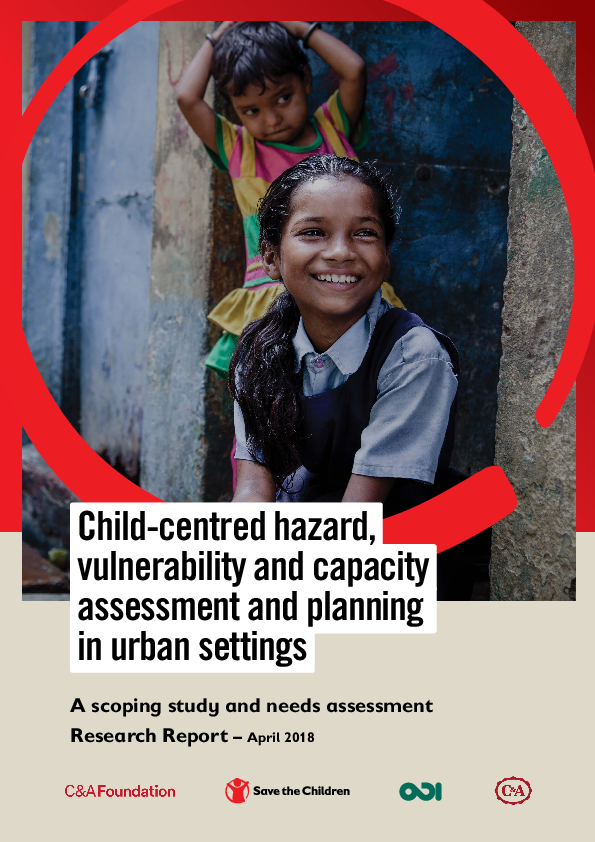
Reports
Child-centred Hazard, Vulnerability, and Capacity Assessment and Planning in Urban Settings
Publication year:
2018
English
Format:
pdf (2.0 MiB)
Publisher:
Save the Children Switzerland
To help develop Child-Centred Disaster Risk Reduction (CCDRR) in urban areas, this report provides new elements for practitioners to better use Hazards, Vulnerabilities, and Capacities Assessment (HVCA) tools.
In youth groups and in urban contexts, a wide range of HVCA methods and toolkits are already being used. Despite examples of good practice, more detailed critical analysis of processes, problems and opportunities when applying HVCA guidance must be conducted. This report examines the challenges of enabling children’s participation and helps create space for their voices to be heard.
The report is divided into the following sections:
1. What HVCA toolkits currently exist? What do they contain?
2. How do organisations decide how best to use their toolkits?
3. Suggestion for a process tool to analyse how to best implement existing toolkits. This section contains important operational questions for practitioners to answer with their teams before conducting a HVCA in an urban setting. This will help practitioners plan better for their projects and provide the flexibility needed in different contexts
Annexes:
A) Review of current pre-assessment processes
B) Note on the potential for technological innovation in HVCAP for urban children
C) Scoping matrix of existing HVCA toolkits (Excel spreadsheet) This section has a table summarising the 20 HVCA toolkits reviewed as part of this research. Practitioners can use this table to select specific tools (or a combination from a number of toolkits) to address project needs.
This report is part of a package of research products on this topic: Research Report, Summary Research Report, Research-into-Practice Brief and Summary, HVCA 5-Step Process Guide and Webinars.
Read full abstract
Authors
View & Download
Document information
Publisher
Format
Content type
Country
Region
Topics
Rights
© Author/Publisher
Found a mistake? Help us improve!
If you have noticed a document assigned to the wrong author or any other inaccuracies, let us know! Your feedback helps us keep our data accurate and useful for everyone.
Share
Link
